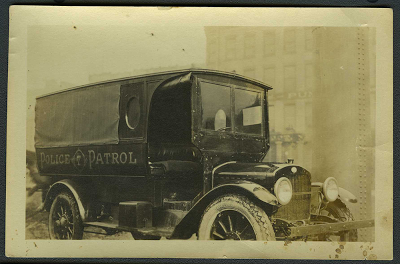Vehicles like this one, from the 1920s, were called ‘paddy wagons.’ The meaning and origin of this nickname are not entirely known, but many theories exist.
 |
| Photograph: Police vehicle, circa 1920. 2006.30.1. Collection of the National Law Enforcement Museum, Washington, DC. |
In the 19th and early 20th centuries, many Irish immigrants settled in the United States and began careers as policemen. By 1860, one in four New Yorkers—over 200,000—had been born in Ireland. Around that time, nearly half of New York City's law enforcement officers were also Irish. Therefore, a paddy wagon might have gotten its name because it was a vehicle often driven by an Irishman. However, paddy wagon may also describe a vehicle that carried several Irishmen, referencing the high number of Irish people arrested in those times. Looking back again to the 1860s, more than half of those arrested in New York City were Irish.
Whether it originally referred to lawmen or lawbreakers, ‘paddy wagon’ is still a term for a police vehicle, usually a van, designed to accommodate a crowd of prisoners. So as you celebrate this St. Patrick’s Day, avoid the paddy wagon, mo chara.



